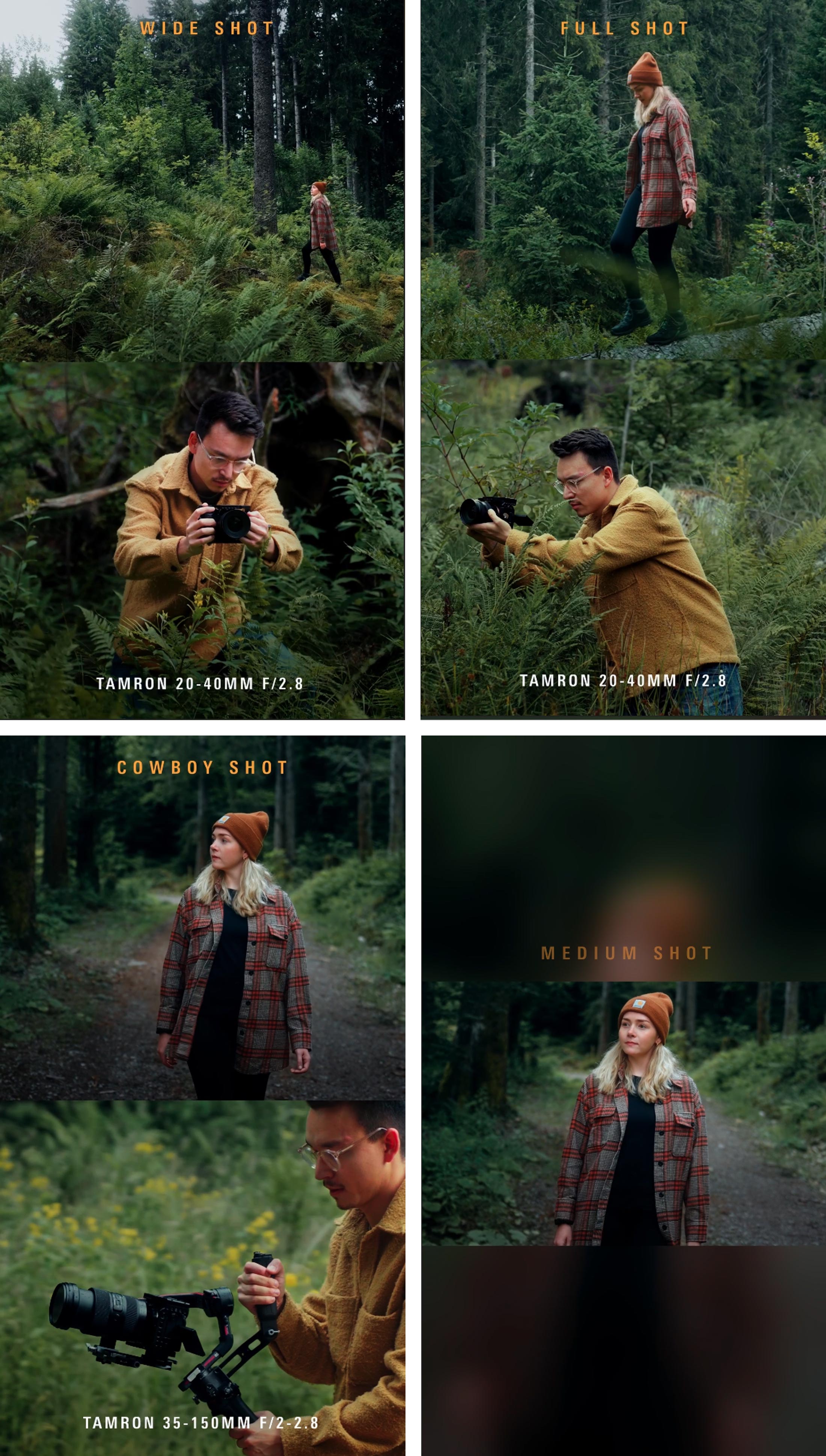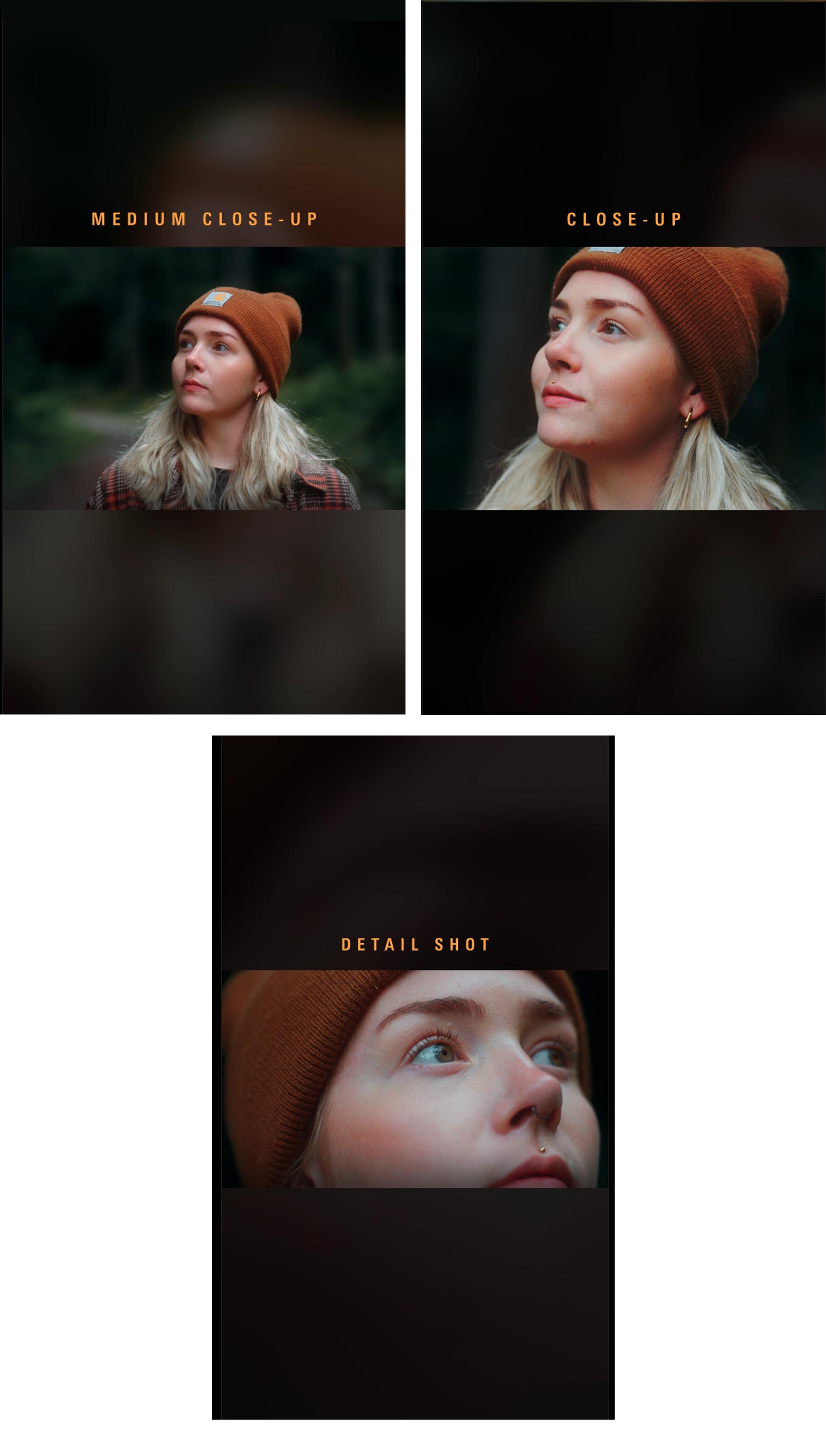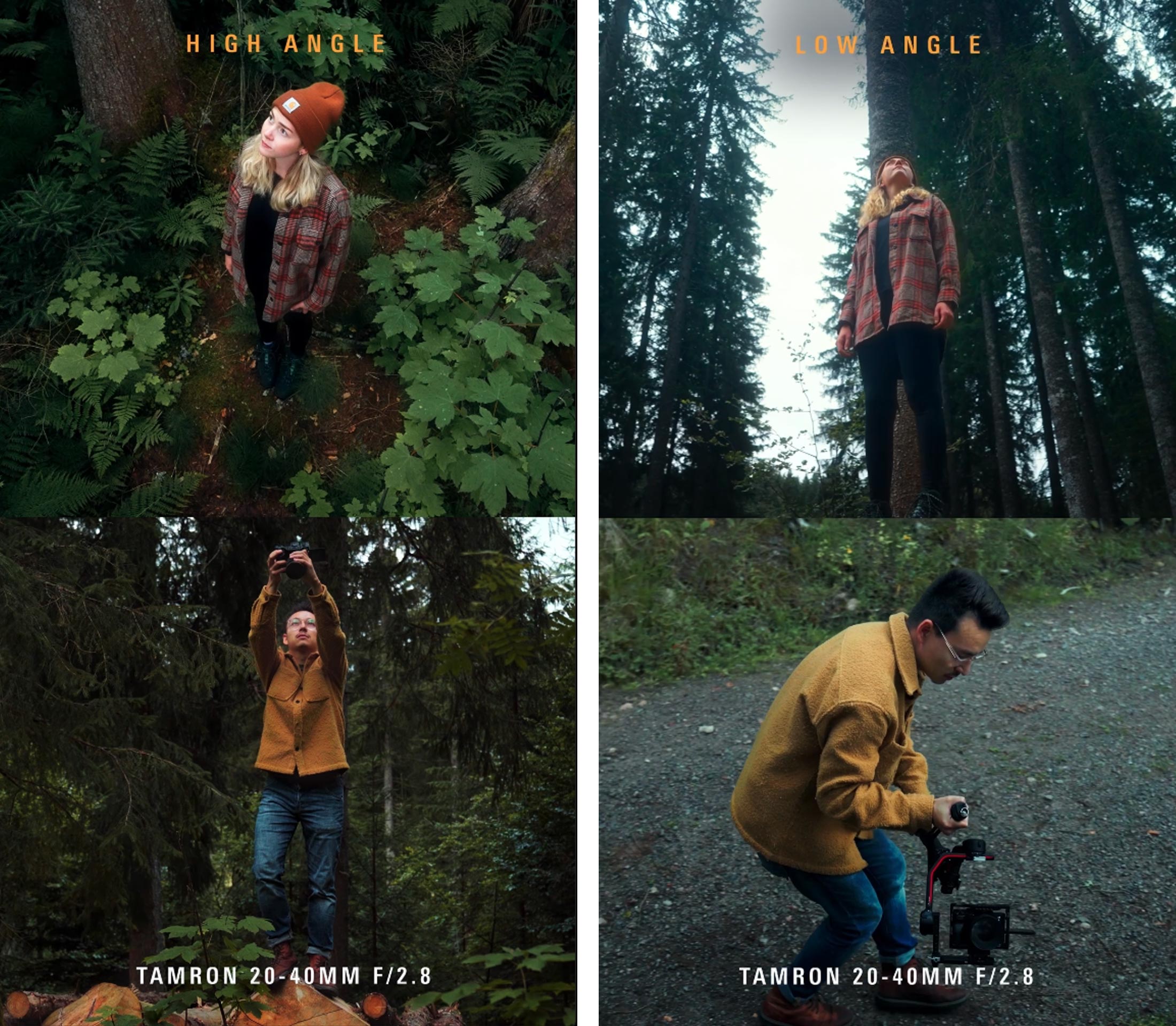
12 sept. 2025
The Most Important Perspectives and Shot Types in Filmmaking
The Most Important Perspectives and Shot Types in Filmmaking
When shooting a film, the choice of perspective and framing is key. Both have a huge impact on how a scene feels and on how the audience perceives the characters and their environment. In this guide, we’ll walk you through the most common types of shots and what they can do for your footage. To illustrate, we’ll be using the TAMRON 20–40 mm and 35–150 mm lenses.

Different Types of Shots
Wide Shot (Establishing Shot) – This shows a large scene and emphasizes the surroundings. It gives viewers an overview of what’s happening and helps place the characters in their spatial context.
Medium Wide Shot – The characters move more into focus, but the environment still plays an important role. Perfect for scenes where both action and setting matter.
American Shot – Characters are framed roughly from mid-thigh upwards. This creates a sense of emotional closeness while still keeping some background visible. It’s especially popular in Westerns, where it’s often used for dialogue scenes.
Medium Shot – Similar to the American Shot, but with a tighter frame. The focus shifts more onto the character and their emotions, while the environment still lingers in the background.

Close Shot – We move even closer to the character. Emotions take center stage, making it easier for the audience to connect with them.
Close-Up – The face dominates the frame. Expressions and gestures are the main focus here, creating an intense emotional impact.
Extreme Close-Up (Detail Shot) – Even more specific, zooming in on details like eyes, hands, or other important objects. This directs attention to key elements and amplifies their emotional weight.

The Impact of Camera Angles
It’s not just framing that matters—the camera angle also shapes how a scene is perceived:
High Angle – Filming a character from above makes them look smaller and less powerful. It can suggest vulnerability or weakness.
Low Angle – Shooting from below makes the character appear larger and more imposing, highlighting strength and authority.
Choosing the Right Shot for Your Film
Every shot type and angle carries its own effect. Depending on the scene and what you want to convey, you can use them strategically to set the right mood. Think ahead about which perspectives best serve your story, and don’t be afraid to experiment with different framings to discover the most compelling way to tell your story visually.
With these basics in mind, you’ll be well-equipped to craft your scenes and really draw your audience into your film.
Check out our short video where we’ve summed up all these perspectives and shot types in action!
Produits TAMRON mentionnés dans cet article
35-150mm F/2-2.8 Di III VXD
Modèle A058
20-40mm F/2.8 Di III VXD
Modèle A062